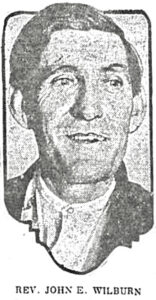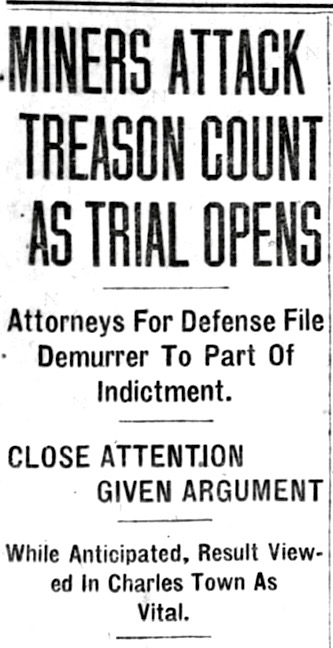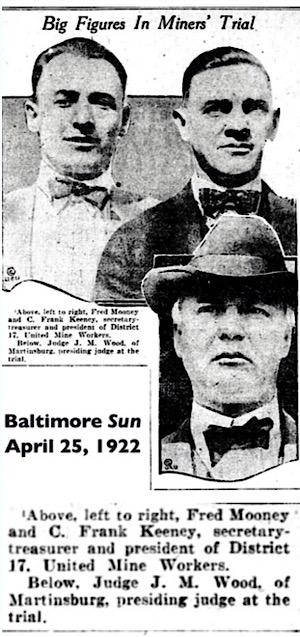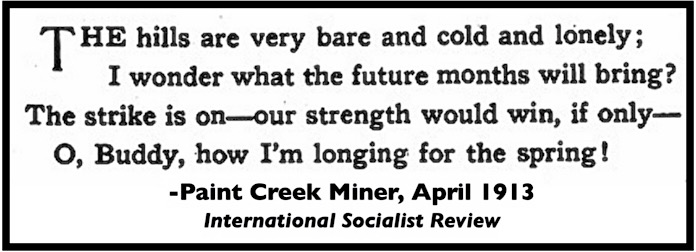 —————
—————
Hellraisers Journal – Friday July 4, 1913
West Virginia Coal Miners’ Victory Turned into “Settlement”-Part I
From the International Socialist Review of July 1913:
[Part I of III]
To those who have been actively engaged in the epochal struggle of the coal miners in this state the present status of affairs is anything but optimistic.
The miners after having put up a fight that won the admiration of the entire working class the country over, have lost their strike and are being driven sullenly back to the Coal Trust’s subterrean hells to produce coal for their brutal masters under the same conditions which have prevailed in the West Virginia coal fields for years, and against which these miners revolted over a year ago.
It is not my intention to give a recapitulation of the stirring events of the Paint Creek strike, but rather a hurried sketch of the manner in which a well earned victory was turned into an empty and meaningless settlement, by a combination of forces against which the miners found themselves helpless.
The coal diggers of the Kanawha valley have proven themselves to be as brave and loyal a set of men as ever established a picket line. They have stoically and uncomplainingly borne the barbaric and inhuman treatment to which they were subjected by the Coal Trust and its political creature-the state government. They had by the sheer force of solidarity, and in spite of the weakness of the antiquated tactics taught them by the officials of the United Mine Workers of America, brought the coal barons to their knees. The state government, too, had exhausted its ingenuity and failed to break the strike. There remained but one hope for the masters of the mines. That was to enlist in their behalf the United Mine Workers of America.
When in the course of these remarks I use the expression ”U. M. W. of A.,” it is meant to apply, not to the men who actually dig coal, but rather to the official oligarchy known as the National Executive Board, members of which were handling the strike in this state.
Overtures were evidently made to these representatives by Governor H. D. Hatfield, acting for the coal autocracy. An agreement was reached, and the three organizations, viz: the Coal Trust, the State government and the U. M. W. of A., acting co-operatively, played the last card which won for the mine owners that which they would have never gained unaided by their last ally.
Everything being “understood” and agreed upon, Hatfield made public what he termed a “proposal for the settlement of the Kanawha strike.”
The proposal made no mention of the three cardinal demands of the miners the elimination of the hated guard system, the right to belong to a union and the payment of the “Kanawha Scale” of wages. In fact it offered absolutely nothing in the way of concessions from the operators-merely insisting-when sheared of its luxuriant verbosity-that the miners return to work under the same conditions that existed before they struck-if the mine owners would let them.

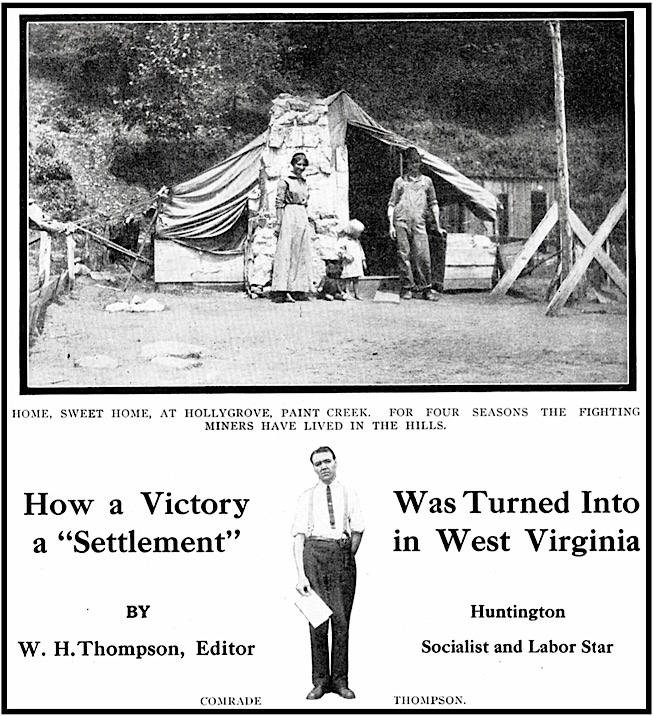
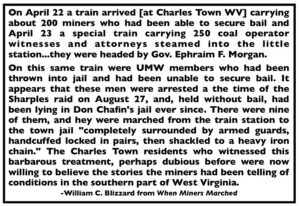 —————
—————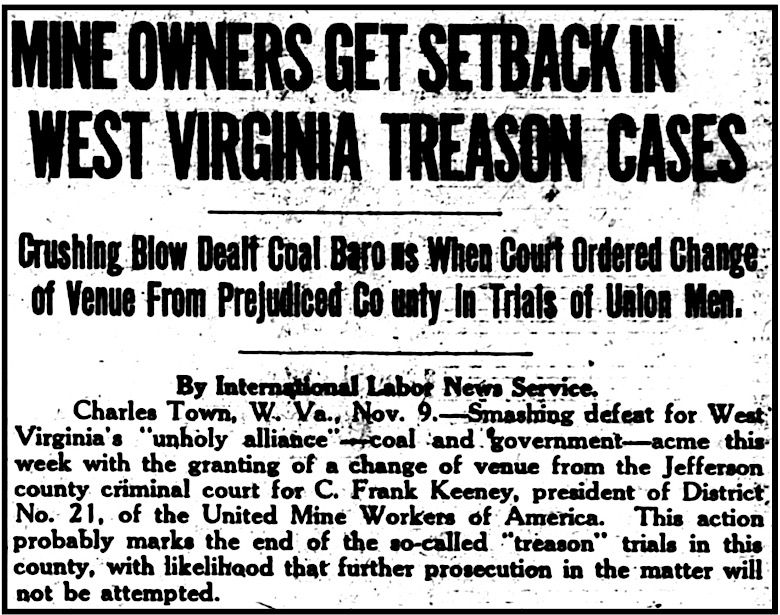
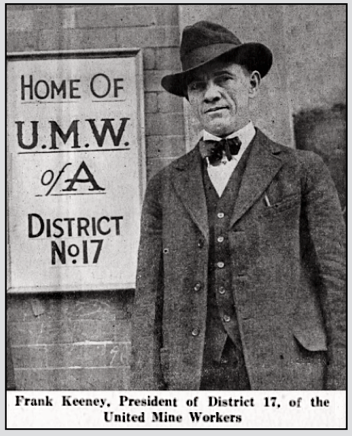
 —————
—————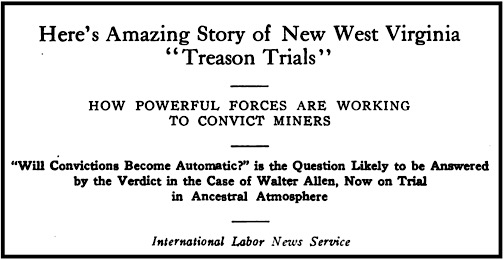
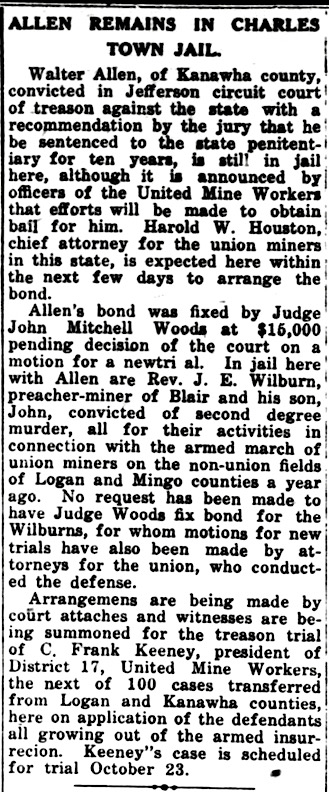
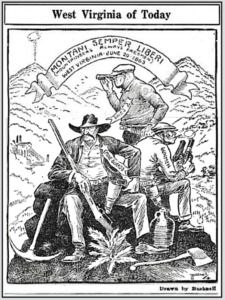
 —————
—————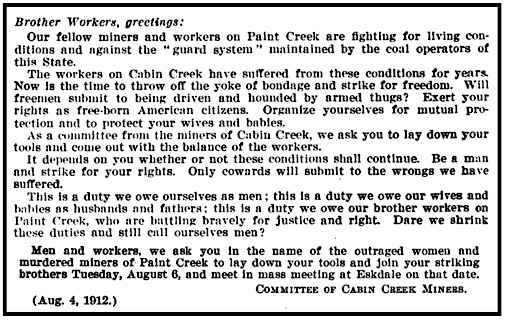
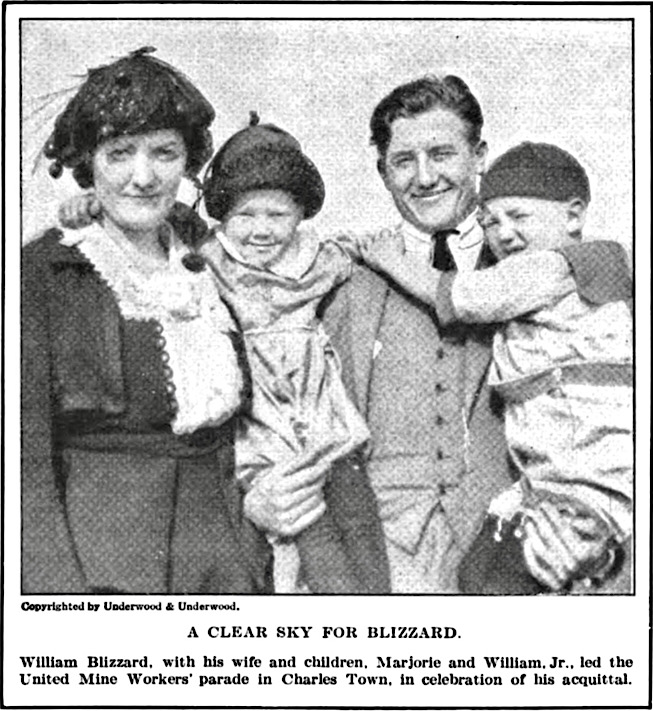
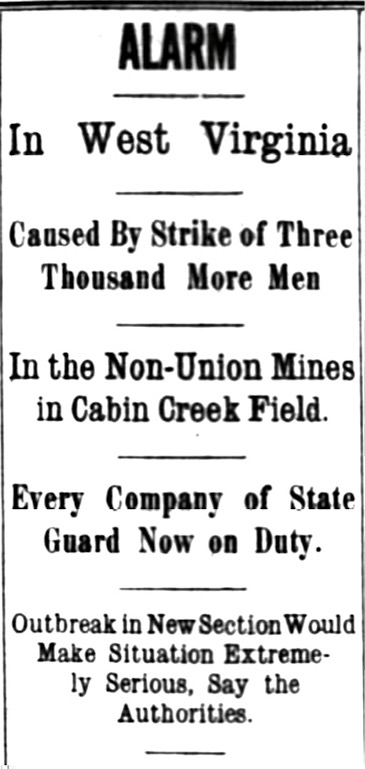
 —————
—————
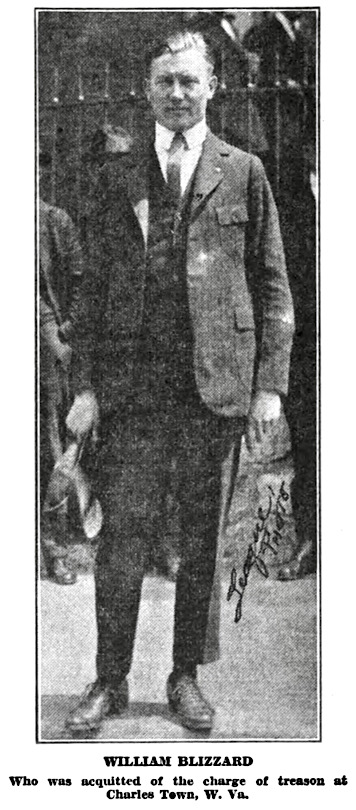
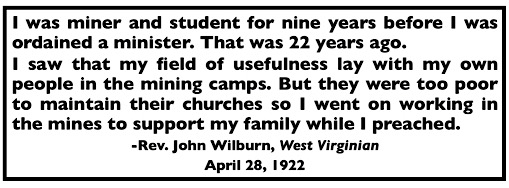 —————
—————